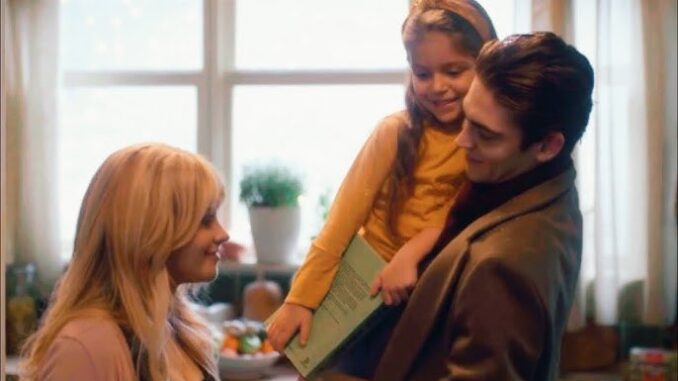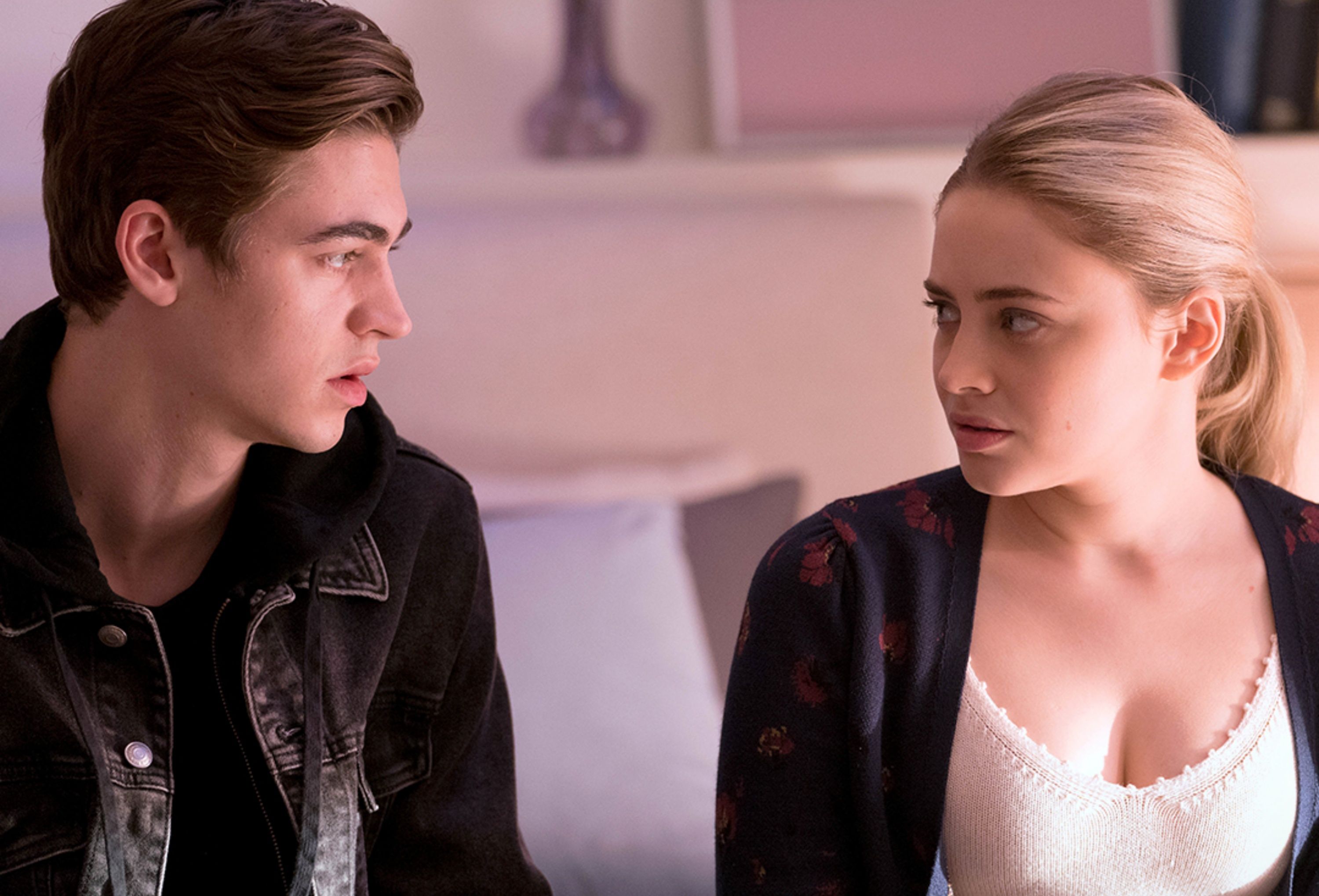
After Ever Happy, the fourth installment in the After series, hit Netflix on December 25, quickly making its way into the Top 10 Movies in the U.S. In the tradition of its spiritual predecessors The Twilight Saga and the Fifty Shades of Grey series, After is a series of films adapted from a successful book series that romanticizes an unhealthy, abusive relationship without identifying or critiquing it as such.
The After films combine the monotony of Twilight and the frequent sex scenes of Fifty Shades of Grey into an even less compelling series without any of the cultural impact. After has no direct relationship to either aforementioned series, but it is important to consider the history of this niche genre of films in order to understand its failures.

The series follows Tessa Young (Josephine Langford) and her tumultuous relationship with boyfriend Hardin Scott (Hero Fiennes Tiffin) as they go through college and post-grad life together. Where Fifty Shades began as Twilight fan fiction, After originated as One Direction fan fiction, with Hardin’s character loosely based on Harry Styles. Author Anna Todd wrote the first three books of the series chapter by chapter on the social storytelling website Wattpad, before they were published by Gallery Books. Each series has unique distinctions, Twilight a fantasy about vampires, Fifty Shades focusing on a BDSM relationship, and After a more watered down coming of age story, but they share several similarities. Each series centers the naive, goody two-shoes female protagonist and the aloof, bad-boy love interest who changes her life. Twilight’s Bella Swan (Kristen Stewart), Fifty Shades’ Anastasia Steele (Dakota Johnson), and After’s Tessa serve as the author’s self insert, with few distinguishing characteristics of her own, which by extension allows the viewer (presumably a teenage girl or young woman) to insert themselves into the story.
Both previous series starred virtual unknowns at the time — Kristen Stewart, Robert Pattinson, Dakota Johnson, and Jamie Dornan — who have gone on to have successful careers in critically acclaimed films despite bland performances in their respective franchises. Langford and Fiennes Tiffin are both competent actors who, given the opportunity, have the potential to do the same, especially considering their familial connections in the industry (Fiennes Tiffin being the nephew of Ralph Fiennes and Langford the sister of 13 Reasons Why star KatherineLangford).
So why were Twilight and Fifty Shades cultural phenomena but After falls by the wayside? A number of factors contributed to this, in particular the time in which they were released. Twilight premiered at a time when young adult fantasy was in vogue, in part due to the popularity of the Harry Potter series. A few years after the release of The Twilight Saga: Breaking Dawn: Part 2, the Fifty Shades franchise became a similarly huge success. Trading in vampires and werewolves for explicit sex scenes, Fifty Shades was marketed to an older demographic of women, and failed to inspire the rabid fandom among teenagers that Twilight did, but still managed to rake in impressive box office numbers. After hit theaters in 2019, over a decade since the first Twilight film and just one year after the release of the final Fifty Shades film, but achieved significantly less success. For comparison, Twilight’s five films grossed over $3 billion total, Fifty Shades’ three films grossed over $1 billion total, while the four After movies have so far only grossed approximately $150 million in box office and video sales.
The After series also suffered massively due to the COVID-19 pandemic, with the fist sequel After We Collided getting a simultaneous theatrical/on-demand release in October 2020, a time when many theaters remained closed for public safety reasons. After We Fell and After Ever Happy were both filmed primarily in Bulgaria in late 2020, and due to COVID-19 travel restrictions, at least five characters had to be recast, some of which had already been recast previously. Langford and Fiennes Tiffin are the only constants, with Tessa’s mother (originally Selma Blair) and Hardin’s father (originally Peter Gallagher) recast after the first movie, and Landon’s mother played by a different actress (Jennifer Beals, Karimah Westbrook, and Frances Turner) in each of the first three films. Even Landon, Tessa’s best friend and Hardin’s stepbrother, was recast, with Chance Perdomo taking over from Shane Paul McGhie after the second film. With multiple sequels and a prequel still on the way, only time will tell if the cast will continue to change.
Both the Twilight and Fifty Shades series have been criticized for their romanticization of abusive relationships, and the After series follows suit. When Tessa and Hardin first meet in After, it appears their relationship will follow the enemies-to-lovers trope à la Pride and Prejudice, referenced repeatedly throughout the film, but the big reveal is that Hardin’s pursuit of Tessa actually began as a dare that developed into real feelings, à la She’s All That. Going into the second film, After We Collided, Tessa and Hardin are broken up, but when Tessa drunk dials him one night, Hardin explodes into a fit of rage when he discovers her with her coworker Trevor (Dylan Sprouse) after showing up to her hotel room uninvited. This becomes a recurring issue in their relationship, with Hardin unable to control his jealousy whenever Tessa interacts with another man, convinced they all have ulterior motives and want to sleep with her, even his stepbrother Landon.
In the first two films Hardin exhibits plenty of red flags, but the third and fourth films are where Hardin’s treatment of Tessa really takes a turn for the worse. In After We Fell, when Tessa is offered her dream job with Vance Publishing, which would require her to move to Seattle, he downplays her accomplishments, claiming he got her the job, and refuses to even consider moving to Seattle with her. He also has frequent violent outbursts when distressed, breaking glasses, punching walls, starting physical fights, and even setting his mom’s house on fire in After Ever Happy. Hardin’s childhood trauma is used to excuse his troubling behavior, and Tessa is told not only by him, but by his parents and her own mother, that she’s the only person who has been able to help him.
Tessa feels obligated to stay with Hardin, despite having to walk on eggshells around him, and him crossing every boundary she tries to set. When she confides in him that she is unable to get pregnant, instead of comforting her, he quickly makes it about himself, despite claiming he never wanted children in the first place. When Tessa’s dad dies of a drug overdose, Hardin flies from London to see her, despite her not wanting to see him, and literally runs away from him when he shows up to her house uninvited. But perhaps Hardin’s worst transgression is when he writes and publishes a book, After, detailing not only their tumultuous relationship but exploiting Tessa’s personal trauma without consulting her, effectively launching his career as an author.
One of the most unhealthy parts of Tessa and Hardin’s on-again off-again relationship, which Tessa finally verbalizes in After Ever Happy, is that every time they have a big fight, and it finally seems like they end of their relationship, they are always brought back together via sex. This is a harmful example to set for young viewers watching this series, which is more readily available than ever with three out of four of the movies now available on Netflix. Unfortunately, it seems there will always be a market for media that romanticizes abusive relationships, but it’s time to put to rest the “I can fix him” mindset that portrays this alarming dynamic as viable.a
